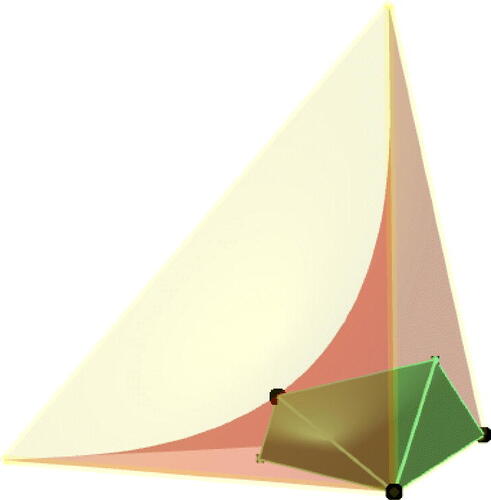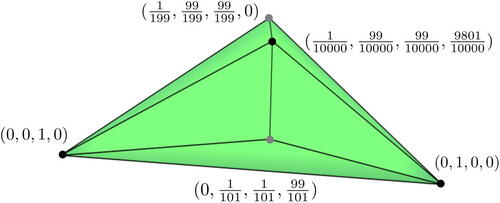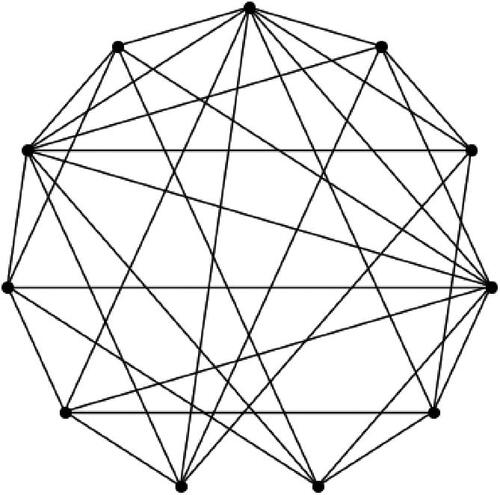Figures & data
Fig. 1 The correlated equilibrium polytope of the Traffic Lights example is a bipyramid where three of its vertices are Nash equilibria. Its f-vector is and its face lattice can be seen on the right.

Fig. 3 A 3-dimensional correlated equilibrium polytope (green) inside the probability simplex (yellow) for a
-game. Its Nash equilibria (black) are the intersection with the Segre variety (red). This picture applies to the Traffic Lights example (Examples 2.1, 2.3, 2.6) as well as the Hawk-Dove game (Example 5.1).

Table
Fig. 2 The vertices of the correlated equilibrium polytope for the Traffic Lights example (Example 2.3).

Table
Fig. 4 The graph of the combinatorially unique 5-dimensional polytope that arises as the correlated equilibrium polytope of a -game, as described in Theorem 5.9.

Table 1 The number of unique combinatorial types of PG of each dimension for a -game in a random sampling of size
.
